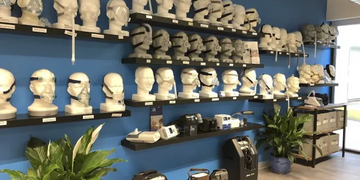Being diagnosed with sleep apnea can feel overwhelming at first. Many people walk away from their doctor’s office with more questions than answers. What does this condition really mean for your daily life? How will treatment work? Can it be managed long-term? If you’ve recently received a diagnosis, you’re not alone. Millions of people in the UK and worldwide live with sleep apnea and manage it successfully.
To help clear up some of the confusion, we’ve put together the top 5 questions people ask after a sleep apnea diagnosis, along with straightforward answers you can rely on.
1. What exactly is sleep apnea, and how serious is it?
One of the first things people ask after hearing the term sleep apnea is what it actually means. Put simply, sleep apnea is a condition where your breathing repeatedly stops and starts during sleep. These pauses in breathing can last for a few seconds or even longer, and they can happen dozens or hundreds of times each night.
The most common type is obstructive sleep apnea (OSA), which occurs when the airway becomes blocked usually by relaxed throat muscles or tissues. Less common types include central sleep apnea and complex sleep apnea.
Why is it serious? Each time your breathing stops, the oxygen level in your blood drops. This forces your body to jolt awake briefly to restart breathing, often without you realizing it. Over time, this constant disruption can lead to:
-
Daytime sleepiness and fatigue
-
Memory and concentration problems
-
High blood pressure
-
Increased risk of heart disease, stroke, and diabetes
So while sleep apnea might sound like just a sleep issue, it’s actually a condition that can have significant effects on overall health if left untreated.
2. What treatment options are available?
The next big question people ask is about treatment. The good news is that sleep apnea treatment is effective and can dramatically improve both sleep quality and overall health. The most common and trusted treatment is CPAP therapy.
CPAP Therapy
CPAP stands for Continuous Positive Airway Pressure. A CPAP machine works by delivering a steady stream of air through a mask you wear at night. This gentle air pressure keeps your airway open so you can breathe normally and enjoy uninterrupted sleep.
There are different types of CPAP masks to suit various needs:
-
Nasal masks – cover just the nose and are often preferred by side sleepers.
-
Nasal pillows – small inserts that fit at the nostrils for a lightweight feel.
-
Full-face masks – Full face CPAP mask cover the mouth and nose, suitable for mouth-breathers or those with nasal congestion.
Other treatment options may include:
-
Lifestyle changes such as weight loss, reducing alcohol consumption, and quitting smoking.
-
Oral appliances that reposition the jaw to keep the airway open.
-
Surgery in rare cases where structural issues cause the blockage.
Most people start with CPAP therapy because it is safe, non-invasive, and highly effective.
3. Will I need to use CPAP for the rest of my life?
This is one of the most common concerns. Many people worry that once they start CPAP therapy, they’ll be tied to a machine forever. The truth is that it depends on your specific case.
For many, CPAP is a long-term treatment because it directly addresses the problem of airway collapse during sleep. Think of it as similar to wearing glasses: you use them to correct your vision, but if you stop, the problem remains.
That said, some people may be able to reduce or stop using CPAP if significant changes occur, such as:
-
Losing a substantial amount of weight
-
Correcting underlying nasal or throat issues through surgery
-
Making lifestyle adjustments that improve airway stability
However, this should only be done under medical supervision. For most patients, continuing with CPAP therapy ensures the best long-term results.
4. How do I choose the right CPAP mask and equipment?
Choosing the right CPAP mask is crucial for comfort and success with therapy. A poorly fitted mask can cause leaks, discomfort, or even make you give up on treatment altogether.
When selecting a mask, consider:
-
Sleeping position – Side sleepers may prefer nasal pillows or compact nasal masks, while back sleepers may do well with full-face masks.
-
Breathing style – If you breathe mainly through your mouth, a full-face mask may be the best option.
-
Comfort – Look for masks with soft cushions, adjustable straps, and lightweight design.
At CPAP Studio, we offer a wide selection of CPAP masks and accessories from trusted brands like ResMed, designed to fit different preferences and face shapes. Our team can guide you to the best option for your therapy needs.
5. How can I take care of my CPAP equipment?
Proper care of your CPAP machine accessories and mask is essential not only for hygiene but also for extending the lifespan of your equipment. After all, you’ll be using it every night.
Here are some simple maintenance tips:
-
Daily cleaning – Wash your mask cushion and nasal pillows with mild soap and warm water to remove oils and bacteria.
-
Weekly cleaning – Clean the tubing, humidifier chamber, and headgear straps.
-
Filter replacement – Replace disposable filters every 2–4 weeks, and reusable filters every 3–6 months.
-
Mask replacement – Most CPAP masks need replacement every 6–12 months due to wear and tear.
Neglecting cleaning can lead to unpleasant odours, skin irritation, and even respiratory infections. Keeping a routine makes therapy much smoother and more comfortable.
Final Thoughts
Getting a sleep apnea diagnosis can feel daunting, but it’s important to remember that this condition is both manageable and treatable. The key is understanding what it means, starting the right treatment, and taking care of your equipment.
By addressing the top 5 questions people ask after a sleep apnea diagnosis, we hope you feel more confident about what lies ahead. With the right support and equipment like the wide range of CPAP masks, machines, and accessories available at CPAP Studio you can look forward to better sleep, more energy, and a healthier future.







































